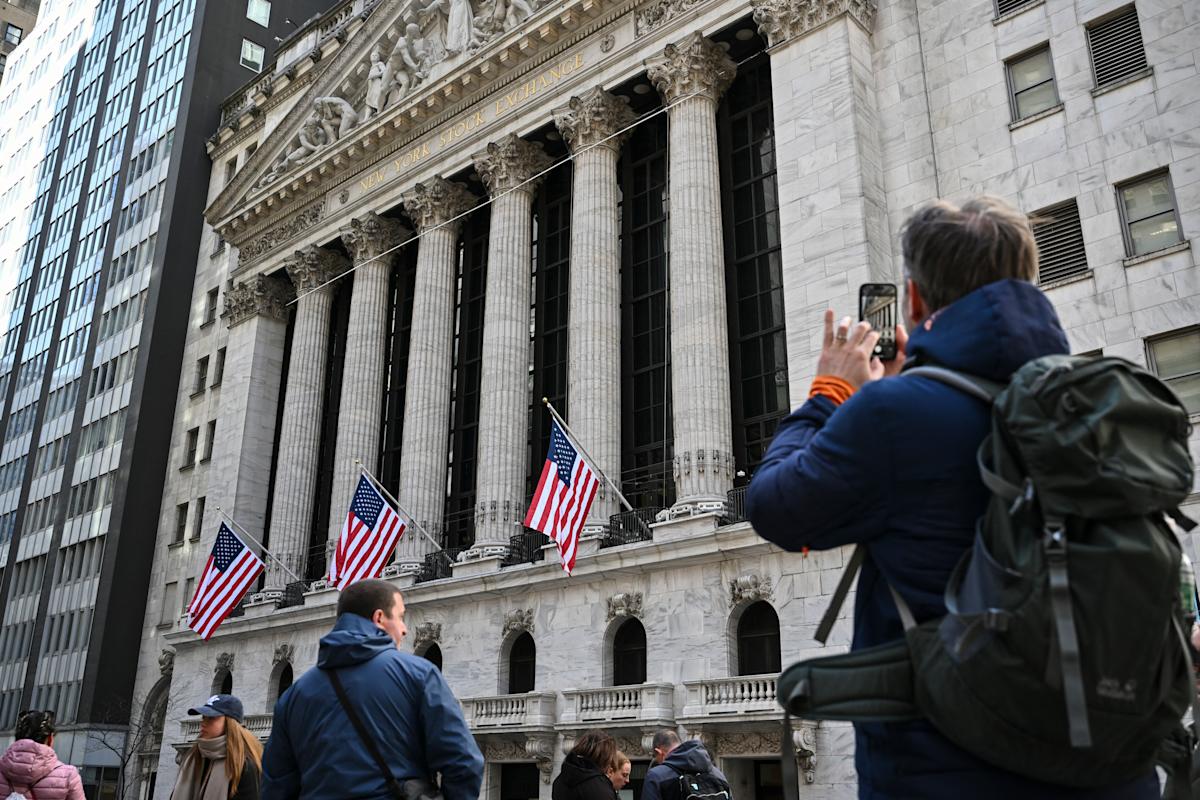US stocks showed a slight decline on Wednesday as the nation confronted its first government shutdown in seven years, which has raised concerns about job security and economic output. The S&P 500 and Nasdaq Composite dropped by just over 0.1%, while the Dow Jones Industrial Average remained relatively flat. This slight dip comes on the heels of a robust third quarter for the markets, creating a contrasting picture for investors as fears of the shutdown’s economic impact set in.
### The Economic Landscape
The government shutdown raises significant uncertainties about the nation’s economy, particularly in light of recent disappointing job data from ADP, which revealed a surprising decline of 32,000 private payrolls in September, significantly underperforming analysts’ expectations for a gain of over 50,000 jobs. With key federal services halted, including the Bureau of Labor Statistics (BLS), the timely release of important economic reports—including upcoming jobs numbers—has become jeopardized. As the BLS prepares to send home most of its workforce, the markets are left waiting for crucial economic indicators that inform Federal Reserve policy.
### Impact of the Government Shutdown
The shutdown poses serious risks for numerous businesses that rely heavily on federal oversight and spending. With hundreds of thousands of federal employees furloughed, the potential for delayed contracting and public services adds another layer of uncertainty to an already wobbly post-pandemic recovery. Investors are particularly nervously scanning for signs of growth disruptions as the economic landscape shifts.
In this context, the longer the shutdown lasts, the more pronounced the impact on GDP growth is expected to be. Small businesses, contractors, and crucial sectors like tourism are particularly vulnerable, as many rely directly on government functions and contracts for their livelihood. The atmosphere on Wall Street has shifted from optimism to wariness, reflecting the concern surrounding these potential ramifications.
### Market Reactions
Amidst this backdrop, Treasury yields experienced a decline as investors sought the safety of U.S. bonds, leading to lower yields for both the 10-year and 30-year notes. This risk-off sentiment underscores the broader anxieties that the shutdown has cast over the economic outlook. As the government shutdown drags on, the Federal Reserve may find itself in a tighter spot when it comes to navigating interest rate policies. The inability to gather labor market data hinders their capacity to make informed decisions about potential rate cuts.
### Tech Sector Developments
In the tech sector, movements in stock valuations further illustrated this mixed economic climate. Meta Platforms experienced a nearly 3% decline, marking a downturn that has seen it fall over 9% since reaching record highs in August. Despite this downturn, there were notable developments, such as Meta’s agreement with CoreWeave for a substantial $14 billion deal for NVIDIA’s new AI server technology. Announcements around acquisitions point toward strategic shifts, but hesitation among investors suggests that these actions may not be enough to offset the downturn.
Other major tech stocks showed mixed performances, with Google and Microsoft shedding around 1%, while Apple and NVIDIA gained marginal returns. This range of outcomes reflects a market presently divided between opportunistic investing and cautious retreat, as the government shutdown influences sentiment.
### Labor Market Woes
The ADP report highlighting a jobs decline coincides with the shutdown’s likely disruption of employer confidence. The job losses, particularly pronounced in the hospitality sector, contribute to an overarching narrative of slowing economic momentum. During a period typically marked by hiring, this decline serves as an alarming indicator of potential challenges in sustaining robust job growth.
Education and health services remained among the few sectors showing growth, counteracting losses across others. However, the overall landscape signals a labor market fraught with uncertainty amid the impacts of both policy shifts and the shutdown.
### Broader Market Indicators
As the stock market grapples with mixed signals and external pressures, the upcoming reports on inflation and employment are particularly important. The absence of timely government reports raises the stakes for private economic data to offer insights during the shutdown. Analysts are increasingly advocating for more extensive reliance on private data to gauge economic health—a shift that reflects discontent with government data dependencies.
### Conclusion
As the shutdown continues to unfold, its implications for both the markets and the broader economy will be closely monitored. Investors are faced with a complex scenario as they juggle concerns over job growth and economic stability alongside sector-specific developments. In an environment of heightened uncertainty, the federal government’s role becomes a central focus for market participants looking to navigate the shifting economic tide. The evolving situation underscores the intricate relationship between government policy and market performance, shaping financial prospects in an ever-changing landscape.
In summary, these developments highlight turbulent times for the U.S. economy, blending a fragile recovery with newfound risks posed by political impasses. The upcoming days will prove critical as stakeholders await clarity on both the government’s operations and the labor market’s trajectory, setting the stage for what may follow in the months to come.
Source link









